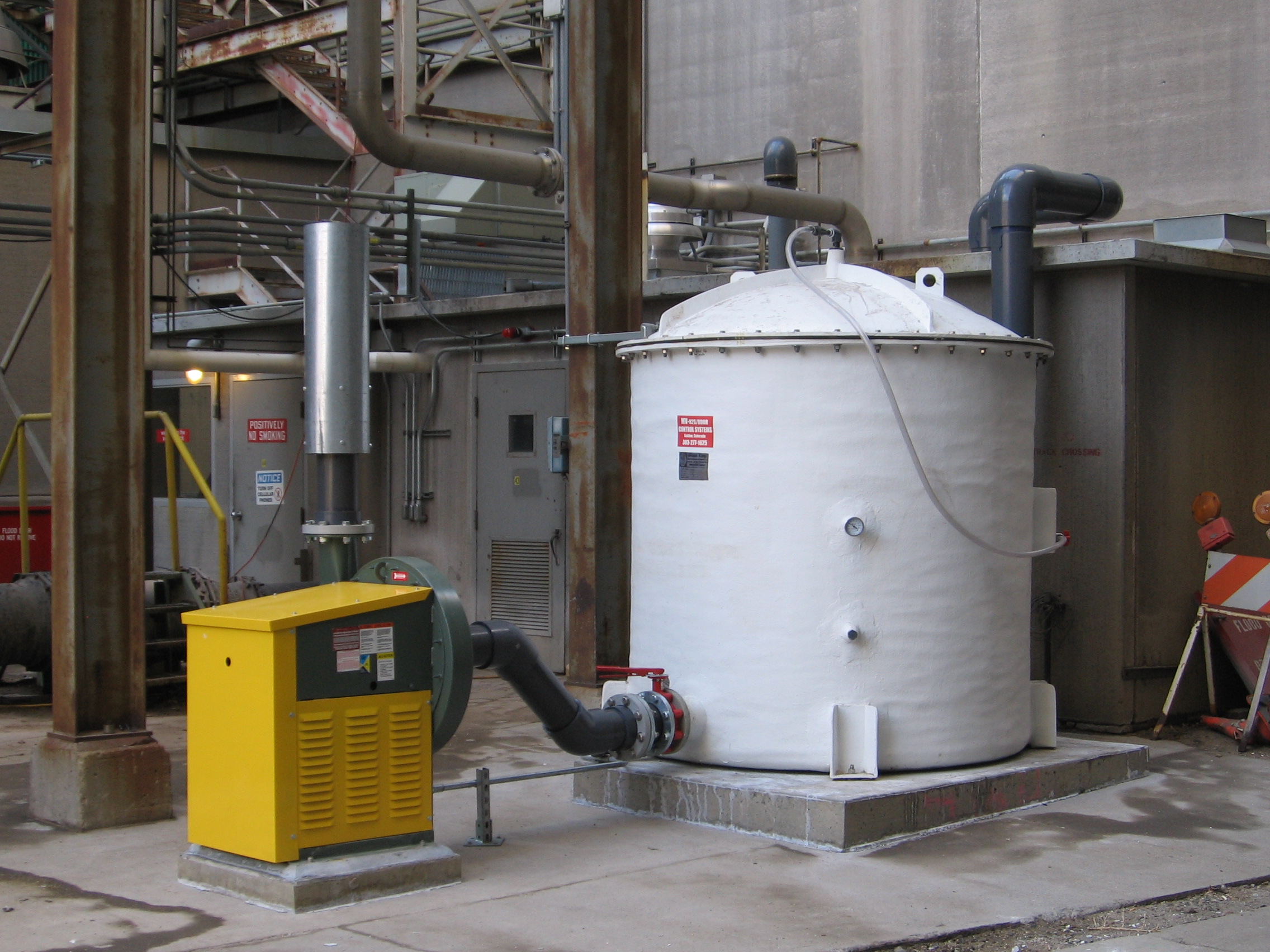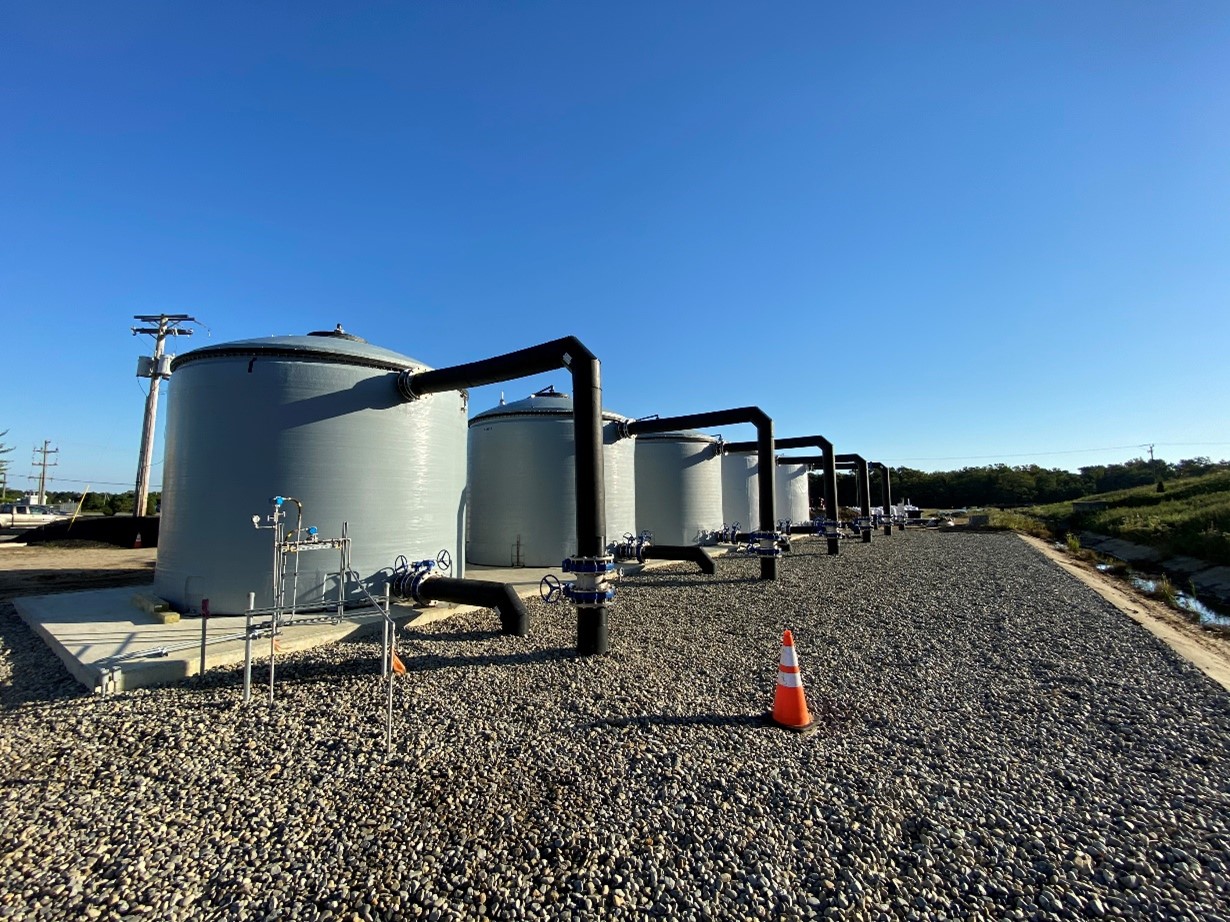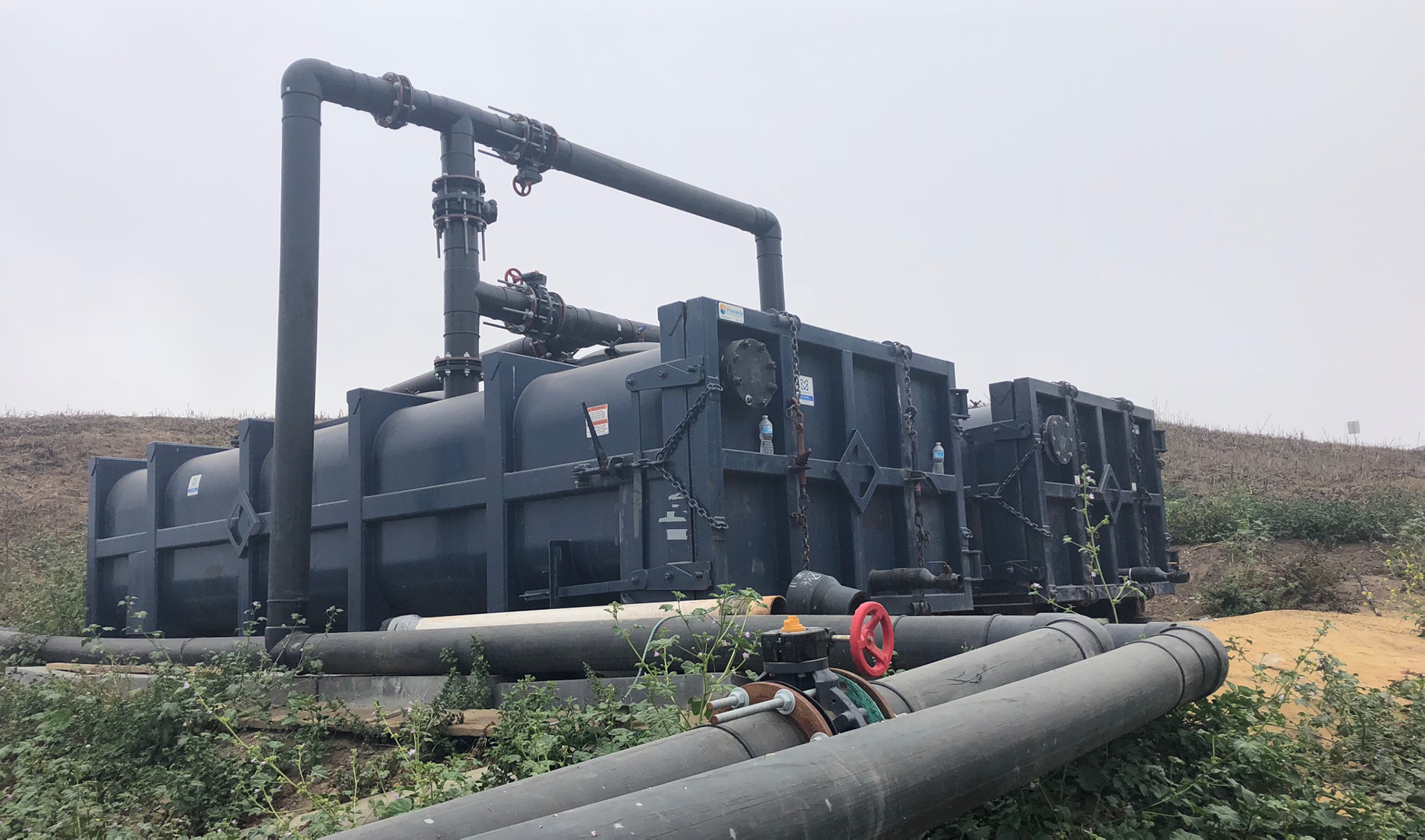H2S Odor Control Systems
OdorFilterTM Systems
MV Technologies OdorFilterTM Systems are designed to optimize the performance of dry scrubber technologies to neutralize malodorous sulfur bearing compounds and H2S vapors while ensuring the most cost-effective solutions based on unique system parameters.
The result is that the odors produced by H2S are often eliminated to the point that they are no longer noticeable to the average person.
These scrubbers can help reduce customer complaints and ensure compliance with local regulations for businesses and many industrial operations. In many cases, installation of these types of systems is required by federal, state, and/or local laws.

How do H2S Scrubber Systems Work?
The odor control system works by exposing the H2S to a catalytic converter, which breaks down the gas into harmless sulfur dioxide (SO2) and water vapor.
MV Technologies offers both enhanced iron sponge-based (OdorFilterTM) and granular-based (OdorFilterTM-G) odor control systems to manage mercaptans and most sulfur-based compounds. Our systems are engineered to optimize a single media or combination of media for maximum efficiency, safety and results.
OdorFilter Systems can be applied to virtually any process that emits hazardous gases like H2S, mercaptans or carbonyl sulfides. We offer SOLUTIONS including but not limited to the following applications:
- Asphalt and Petroleum Transport and Processing
- Agricultural Processes
- Food & Beverage Production & Processing
- Landfill Gas
- Pulp and Paper Mill Processing
- Tanneries
- Wastewater Treatment Facilities

What Are the Key Components of an H2S Scrubber System?
An H2S scrubber system consists of several key components. These include an inlet, a scrubber, a blower, a venturi, a scrubbing media, and an outlet. While it isn’t necessary to understand exactly how the system works in order to have it installed in your operation, a basic understanding of the essential parts helps a lot when communicating with our engineers.
The system starts at the inlet or the point at which the contaminated media enters the system. From here, the media travels to the scrubber, where the chemical absorbent material is housed. Then, the blower helps to draw the media into the scrubber and create a vacuum. The venturi helps mix this media and the absorbent scrubbing material, which can be either dry or liquid. Finally, the outlet is the point at which the clean media is released into the environment or back into a commercial or industrial processing system.

Choosing an H2S Odor Control System
When selecting an H2S odor control system, it is important to consider the size and scope of the area that needs to be treated. If the area is large, a more powerful system may be needed. Additionally, it is important to consider the type of H2S present in the material that is being scrubbed. Different systems are designed to treat different types of H2S.
Configurations vary, based on application and can be skid or trailer-mounted or as simple as a single overpack drum. MV can design and supply dedicated blowers or work with existing vapor recovery systems. OdorFilter™ Systems are stable, high-impact solutions that are far superior to using activated carbon alone, in cost performance for the removal of H2S, mercaptan-based odors and visible blue/grey smoke.
- Eliminates odors from H2S
- Reduces operating costs and increases time between service cycles
- Landfill ‘friendly’ or completely biodegradable
Fortunately, the design and installation experts at MV Technologies have years of experience in identifying the type of H2S present in a system and selecting the right type and size system to deal with it. If you’re unsure of your system needs, give us a call.

Installing and Maintaining an H2S Odor Control System
Installing an H2S odor control system is relatively simple. The system will need to be connected to the existing ventilation system, and the catalytic converter will need to be placed in the air stream. Additionally, the system will need to be maintained, which may involve replacing the catalytic converter periodically.
Maintaining an H2S odor control system is important for ensuring it continues working effectively. The catalytic converter should be replaced periodically, and the system should be inspected regularly to make sure it is functioning properly. The system should also be checked for leaks or blockages, and the air filter should be replaced regularly. Regular maintenance will help to ensure that the system continues to reduce the amount of H2S in the air.
If you’d like to email info@mvseer.com with your project parameters, an MV Engineer will provide a system recommendation and budgetary quote.
MV Technologies Preferred Media:
- BAMTM enhanced iron sponge media MV modifies commercially available iron sponge and markets it as B.A.M. (bio-active media). MV purchases standard-grade iron sponge products from a commodity supplier, and enhances that material with biological agents to produce a more reactive and effective media.
- AxTrapTM high capacity granular media MV Technologies is a distributor of AxTrapTM media products. AxTrapTM media is the exclusive product of Axens with USA and foreign patents granted and applied for. AxTrap is a trademark of Axens, all rights reserved.
Odor Control System
- What Are the Main Causes of Odors in Wastewater Treatment Facilities and Industrial Plants?
Odors found in industrial facilities and wastewater treatment centers are typically caused by the presence of H2S, also known as hydrogen sulfide. H2S is a sulfur-bearing compound, resulting in a sulfur smell often compared to “rotten eggs.” H2S is produced during the anaerobic digestion of organic compounds and materials, such as manure. - Are H2S Odor Control Systems Customized for Industry Needs?
Yes, whether you are working with food processing (meat and beverages), landfill management, agricultural work, paper mills, or even wastewater treatment centers, MV Technologies provides highly customized H2S odor control systems for each industry based on specific needs and demands. From eliminating odors in the petroleum and asphalt industries to creating safe environments at local wastewater plants, we specialize in individualized solutions while ensuring industry compliance with regulations. - What Factors Matter When Selecting an H2S Odor Control Solution or System?
When choosing an ideal scrubbing media for H2S odor control and/or removal, your industry, the existing concentration level of H2S, desired removal efficiency, and other potential contaminants will need to be considered. Cost and operational considerations will also be factored in when determining the H2S scrubbing media that is right for your odor control needs. - How Do Granular-Based Odor Control Systems From MV Technologies Work?
MV Technologies offers granular-based odor control solutions, such as AxTrap©, which uses high-capacity granular materials to adsorb H2S and surrounding compounds. This process prevents sulfuric compounds and H2S from being released into the air while neutralizing the gases produced by the surrounding environment. - What is the Difference Between Iron Sponge-Based Odor Control Systems and Traditional Solutions?
With MV Technologies, we offer BAM© media removal solutions with the use of an iron sponge-based system in place. While traditional iron sponge methods rely solely on chemical reactions to produce the desired effects, MV Technologies BAM© media utilizes biological agents to increase the overall effectiveness and reactivity while neutralizing H2S. - What Role Does a Catalytic Converter Play in an H2S Odor Control System From MV Technologies?
When developing an H2S odor control system for effective H2S removal, a catalytic converter is used to break down H2S into harmless sulfur dioxide, or SO2, rather than remaining as H2S. The catalytic converter also produces water vapor, neutralizing the odors and potentially toxic gases present in the surrounding environment. - Will the Presence of Siloxanes Affect H2S Odor Control Systems?
In many instances, siloxanes can impact H2S odor control or removal systems by generating abrasive compounds once heated. This can be extremely damaging to equipment while simultaneously reducing the effectiveness of scrubbing media in use. However, MV Technologies specializes in developing H2S odor control systems that are designed to provide effective odor control even in systems with various contaminants and systems in which siloxanes are already present. - Is Maintenance Required for an H2S Odor Control System?
Yes, routine maintenance can help prevent blockages, leaks, and inefficiencies with air filters and airflow. Routine inspections and scheduled replacement of scrubbing media and catalytic converters (as necessary) can extend the lifespan of your H2S odor control system. MV Technologies can ensure the longevity of your H2S odor control system with ongoing maintenance services.
